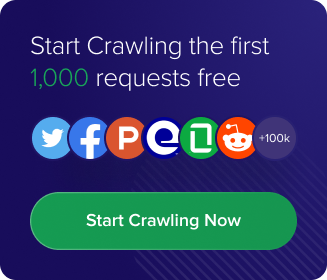Web scraping, also known as web harvesting, screen scraping, is an automatic method to obtain data from websites. This data can be processed and stored in a structured format in a data pipeline. Web scraping can do this manually; however, automating the process is usually faster, more efficient, and less error-prone. Web scraping is a technique for fetching data from web pages in a variety of ways. These options include web scraping tools, specific APIs, or even writing your code from scratch.
Most businesses nowadays are taking service of scraping tool because through it they don’t have to set the infrastructure for scraping, which also cost a significant amount of money. Furthermore, they don’t have to get involved in more technical scraping stuff. These cloud-based scraping companies provide easy-to-use APIs and robust solutions, which do not require much coding and technical knowledge.
There are a lot of advantages of web scraping. Web scraping is used in a variety of industries, including information technology, eCommerce, education, real estate, marketing, and others. Extracted data can be a valuable resource. It has the potential to assist businesses in making better decisions. The following are some of the benefits: Lead generation, Price and Product optimization, Competitor analysis, data analytics.
- Lead generation
- Price and product optimization
- Competitor analysis
- Data analytics
Through a reliable web scraper tool like Crawling API, we can extract as much data as we want without worrying about restrictions, blocks, and CAPTCHAs.
A web scraper tool for tracking and managing data pipelines offers several beneficial features, such as scraping data in multiple threads, real-time data transfer, live monitoring, schema management, and geo-located rotating proxies.
A robust web scraping data pipeline allows you to gather data from websites automatically and feed it into a data pipeline, which can be handled and viewed using visualization tools like Tableau and Power BI. This allows the organizations to save time on tedious data collection duties and maintain the data pipeline otherwise.
Data Pipeline
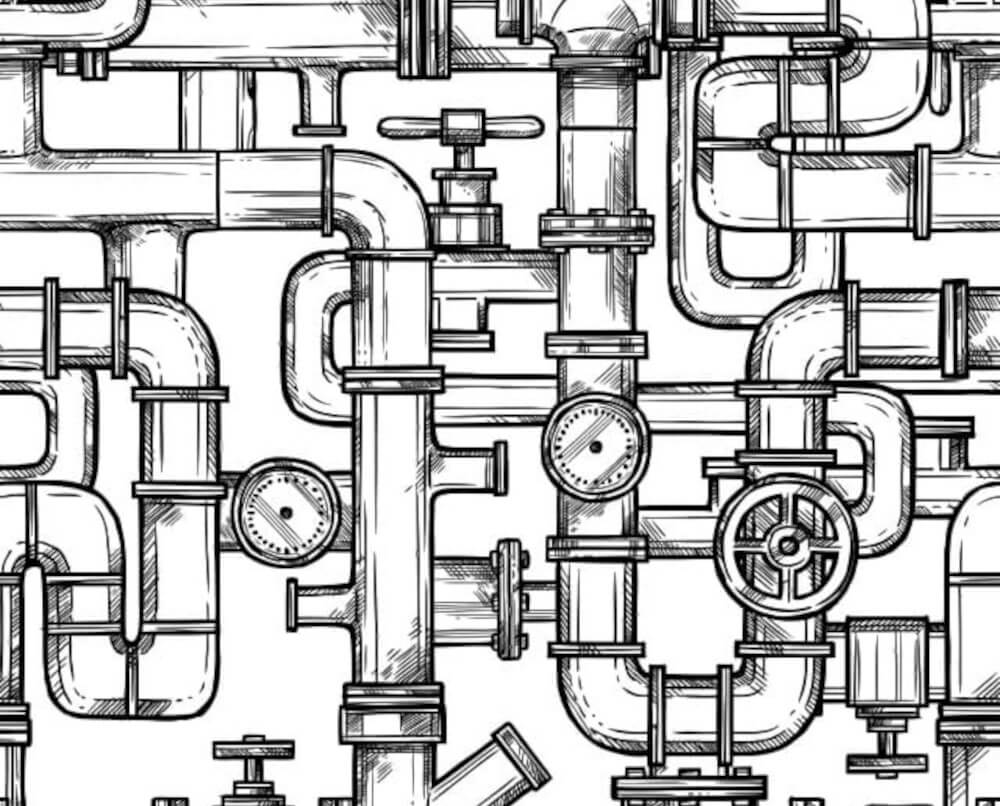
A data pipeline, often known as ETL, moves data from one process to another. It means that one system segment’s output becomes the next’s input. These pipelines carry data from several sources; multiple lines can converge at one point, flow in different directions, and they’re constantly steaming. A data pipeline’s primary role is transporting data from one state or location to another.
The standard processes performed through a data pipeline are ETL: Extract, Transform, and Load.
Extract refers to collecting data from the actual location and transforming it into a readable format. The term “load” refers to sending data to a database, such as a database, where data can be analyzed.
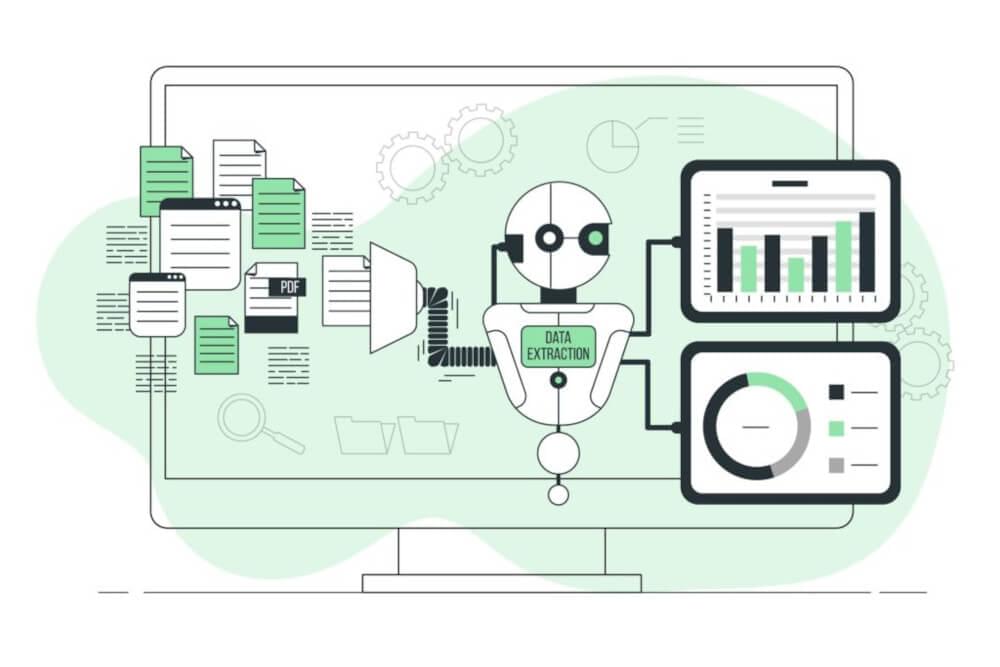
The data source may consist of data from Software as a Service (SaaS) applications and relational databases. Most pipelines use a push mechanism, an API call, a replication engine that pulls data regularly, or a webhook to ingest raw data from different sources. Furthermore, The data can also be synchronized in real time or at predetermined intervals.
Two types of data ingestion models exist: Batch processing and Stream processing. The data from the source is collected periodically and sent to the destination system in Batch processing. In contrast, in Stream processing, data is sourced, manipulated, and loaded as soon as data is created.
The destination can be a data store like local servers, a cloud-based data warehouse, or a business intelligence or analytics application such as Power BI or Tableau.
Data transformation encompasses data standardization, sorting, de-duplication, validation, and verification. The main goal is to make data analysis possible.
Data pipelines have a monitoring functionality to ensure data integrity and a mechanism that alerts administrators about failure scenarios.
Many businesses create their own data pipelines. However, developing an in-house pipeline is not without its difficulties. Different data sources offer different APIs and use a variety of technologies. Every data source requires new code, which may need to be rewritten if a vendor’s API changes or the organization chooses a different data warehouse destination.Data engineers must deal with two other issues: speed and scalability. The high prices and ongoing maintenance effort needed can be considered significant hindrances to building an in-house data pipeline.
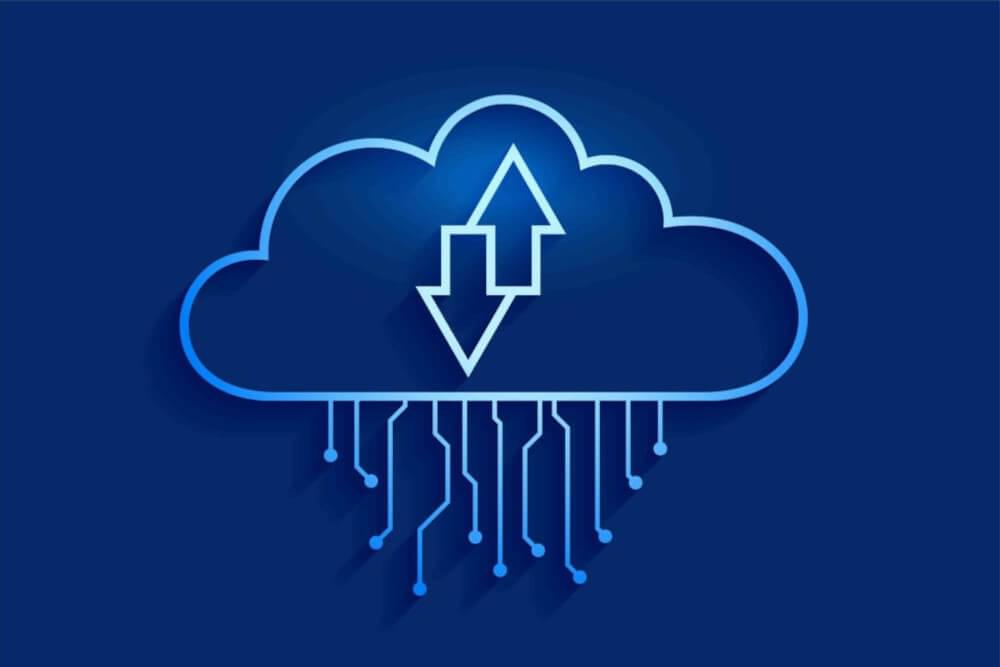
There are cloud-based data warehouses and cloud-based ETL services. In minutes, firms can establish a cloud-first platform for moving data, and data engineers can rely on the solution to monitor and manage unusual scenarios and failure points. The provider of a SaaS solution monitors the pipeline for these issues, sends out timely alerts, and takes all reasonable steps to rectify failures. Rather than maintaining the data pipeline, business leaders and IT management can improve customer service or optimize product performance.
Solutions for Data Pipelines
Cloud-Based
Using cloud-based tools to combine data has a very favorable cost-benefit ratio. Businesses have figured out how to keep their infrastructure up to date while spending as little money as possible. On the other hand, choosing vendors to manage data pipelines is an entirely different matter.
A data pipeline’s nature and functional response would be distinct from cloud tools for migrating and using data in a real-time solution.
Open-source
The term has a strong connotation for data scientists who want clear data pipelines that don’t deceive customers about data usage. Firms that want to cut costs and reduce their reliance on vendors will benefit from Open Source tools. However, to tailor and modify the user experience, such tools require expertise and functional comprehension.
Real-Time Processing
Real-time processing is advantageous for businesses that need to process data from a regulated streaming source. Moreover, real-time processing is possible due to the compatibility of the financial market and mobile devices. On the other hand, real-time processing necessitates limited human interaction, auto-scaling choices, and possible partitions.
Batch Processing
Batch processing enables businesses to move large amounts of data at regular intervals without requiring real-time visibility. The method simplifies the task of analysts who must combine a large amount of marketing data to arrive at a conclusive result or pattern.
Difference Between Data Pipeline And ETL?
The term ETL stands for Extract, Transform, and Load. It is distinct because it focuses solely on one system for extracting, transforming, and loading data into a specific data warehouse. On the other hand, ETL is just one component that makes up the data pipeline.
ETL pipelines send data in batches to a designated system at predetermined intervals. On the other hand, data pipelines have a more comprehensive range of applications for transforming and processing data in real-time or streaming mode.
Data pipelines aren’t required to load data into a data warehouse; instead, they can lead to a specific target, such as Amazon’s S3 bucket, or even connect to a completely different system.
The influence of data pipeline in decision-making
The data-driven culture has become indispensable to today’s decision-makers. Furthermore, one of the primary reasons for its success is incorporating multiple analytic data into a simplified dashboard.
The confined structured data assists business owners, and entrepreneurs in making the best decisions based on the evidence they have collected. However, this pattern holds for managers who previously relied on simple modeling designs and descriptive statistical data to make informed decisions.
The Advantages of a Data Pipeline
Simple and Effective
Although data pipelines have a complicated infrastructure and operating procedure, their use and navigation are straightforward. Similarly, using the Java Virtual Machine language to read and write files facilitates the learning process of establishing a data pipeline.
On the other hand, the decorator pattern is designed to transform a simple action into a robust one. When it comes to piping data, programmers enjoy it more than anybody else.
App compatibility
Customers and digital marketing strategists can both benefit from the data pipelines’ embedded nature. Its seamless interoperability eliminates the need for installation, configuration files, or reliance on a server. By simply embedding the modest size of the data pipeline inside an app, you can have complete data access.
Metadata Flexibility
One of several data pipelines’ most valuable features is the separation of custom fields and records. You can use the information to track down the data source, creator, tags, instructions, new changes, and visibility choices.
Built-In Components
Web scraping data pipeline includes built-in components that allow you to get your data in and out of the pipeline, even if you have the customizable option. After activating the built-in features, you may begin dealing with the data using stream operators.
Enhances efficiency
Data pipelines provide for high-performance data migration and manipulation. The robust infrastructure also ensures high data quality by screening out erroneous data transfers and preventing data redundancy.
Allows quick data analysis to gain business insights
Data pipelines provide a secure environment for data administration and analysis. It enables businesses to analyze data and give actionable insights by integrating visualization tools.
Web Scraping Challenges You Might Face
Developers and data scientists often encounter two primary hurdles regarding web scraping: the presence of anti-bot systems and the expenses associated with running scrapers.
Websites employ anti-bot systems, such as CAPTCHAs, fingerprint challenges, and more, to prevent bots from accessing their content. Overcoming these systems requires advanced methods. Additionally, web scraping requires substantial computational resources, bandwidth, regular maintenance, and updates.
Now, let’s explore some challenges you may face during web scraping:
- IP Bans: If a website detects an IP address being used for malicious or excessive requests, it can ban or limit access from that address.
- CAPTCHAs: CAPTCHAs (Completely Automated Public Turing Tests to Tell Computers and Humans Apart) are widely used security measures that make it difficult for web scraping data pipeline to access websites. They require manual interaction to solve a challenge before granting access to the desired content.
- Dynamic Content: Traditional web scraping techniques heavily rely on analyzing HTML source code, which often contains static data. However, modern websites frequently feature dynamic content that changes in real-time. This poses a challenge for the web scraper tool for managing data pipeline as it needs to adapt its methods to capture this dynamic data.
- Login Requirements: Many websites require users to log in before accessing certain content. This can hinder web scraping efforts as it involves handling authentication processes and obtaining valid credentials.
- Complex Website Structure: Websites with intricate structures and nested elements can be challenging to scrape efficiently. Navigating through different pages, handling pagination, and extracting relevant information from various sections can be time-consuming and complex.
- Anti-Scraping Measures: Some websites actively implement anti-scraping measures to deter bots and protect their data. These measures can include blocking specific user agents, implementing JavaScript challenges, or employing obfuscation techniques to make scraping more difficult.
- Handling Large Volumes of Data: Web scraping data pipeline often involves collecting and processing a large amount of data. Effectively managing and storing this data can be a challenge, requiring robust infrastructure and efficient data storage solutions.
- Legal and Ethical Considerations: While web scraping data pipeline itself is not illegal, scraping certain websites or specific data types can violate terms of service or copyright laws. Understanding and complying with legal and ethical guidelines is essential when engaging in web scraping activities.
- Maintaining Scrapers: As websites frequently update their structure and content, your web scraper tool for tracking data pipelines must be regularly maintained and updated to ensure their effectiveness. This requires monitoring websites for changes, adjusting scrapers accordingly, and fixing any issues.
- Scalability: Scaling web scraping operations to handle large amounts of data or target multiple websites can present scalability challenges. Ensuring scrapers can handle increased traffic, adapting to changes in website structure, and managing multiple concurrent scraping processes can be complex.
Web scraping presents several challenges, including anti-bot systems, computational resources, dynamic content, login requirements, complex website structures, anti-scraping measures, data management, legal considerations, scraper maintenance, and scalability. Overcoming these obstacles requires advanced techniques, careful planning, and reliable solutions.
The Crawlbase Scraper for your Data Pipeline
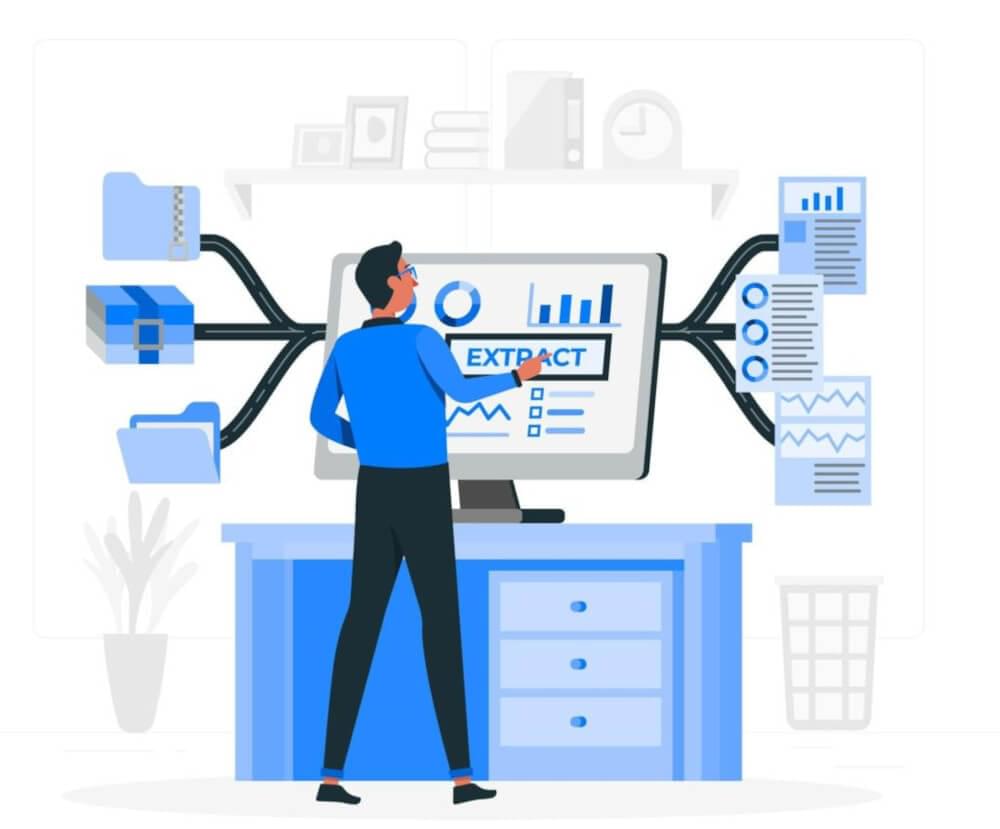
APIs are a great way to boost productivity by saving time and resources. Nowadays, firms no longer want to start from scratch to scrape the web to save money and time. APIs are the future of Software as a Service, with third-party APIs allowing developers to do everything extremely easily and several key features that can help manage the data pipeline effectively.
The Crawlbase Scraper is one of the top scraping tools for web scraping. It allows you to extract a large number of web pages without being sluggish. It enables you to bypass any type of limitation and extract large-scale web pages effortlessly. Crawlbase handles scraping data from worldwide locations and the most advanced AI to ensure that every request is successful. Its API is built on hundreds of high-quality proxies with over 17 data centers worldwide that handle scraping data from worldwide locations.
The output of these scrapers is generally unstructured data in the form of JSON or raw HTML; the data needs to be assorted and cleaned before feeding into the data pipeline. There are various techniques to clean the scraped data the developers need to work on. The cleaned data can be used to train the Machine learning models or for analytics purposes. This type of scraper tool can be a perfect fit for your data pipeline to manage, track and visualize the datasets.





